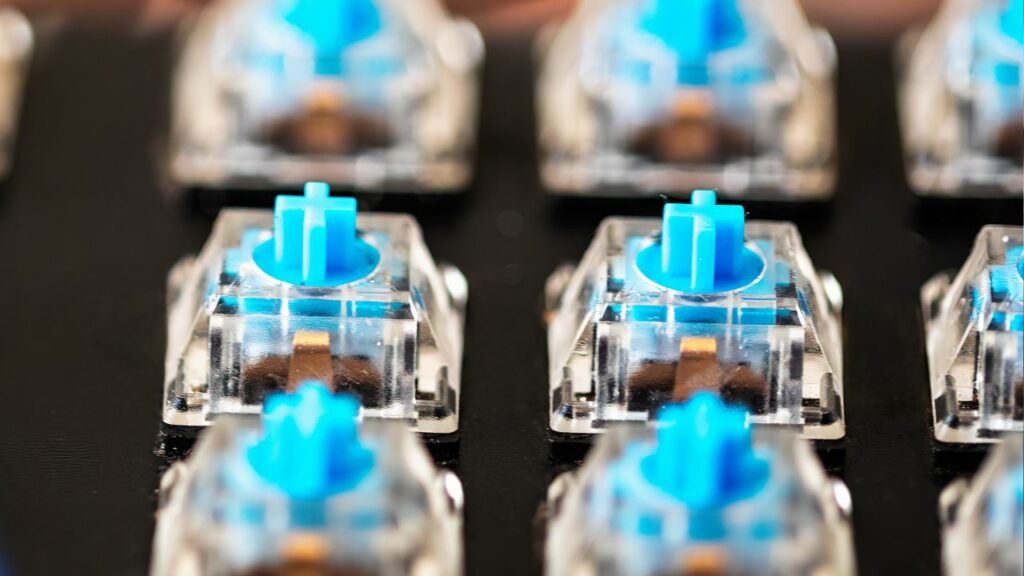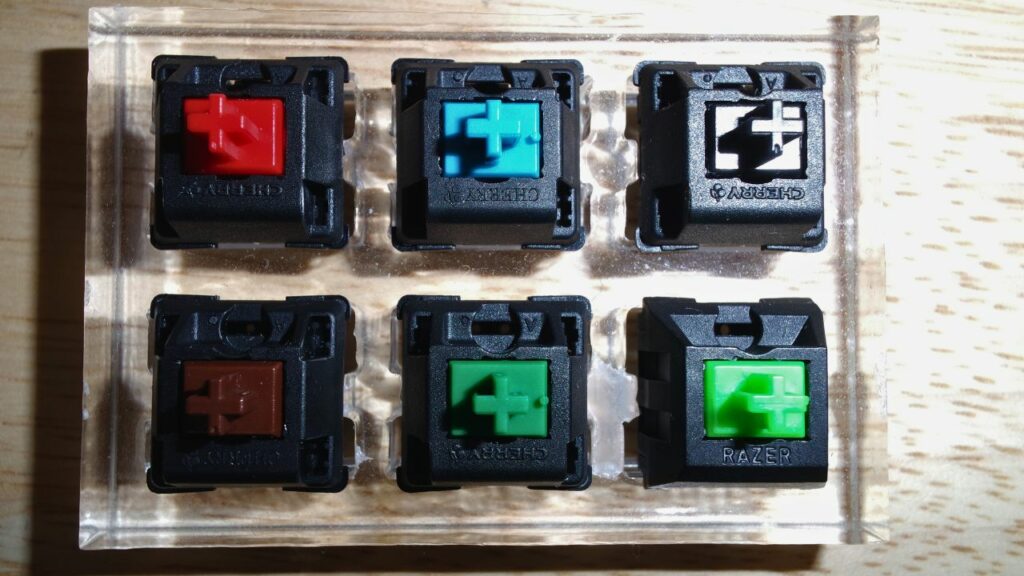When it comes to the world of mechanical keyboards, two names often come up in conversation: Outemu and Cherry. Both are revered for their unique switch technology, but they cater to distinct segments of the market and offer varying experiences. In this article, we’ll delve into the key differences between these two giants to help you make an informed decision.
The Origin of Outemu and Cherry Switches
Cherry MX switches, hailing from Germany, are the industry standard when it comes to mechanical keyboards. They offer a whopping 14 different versions for all sorts of typists and gamers. On the other hand, Outemu switches are essentially cloned versions of the Cherry MX switches. Born out of a Chinese company, they provide 12 versions at a significantly lower price point.
Now, you might wonder if there’s a catch. Well, while Outemu switches do mimic Cherry’s design somewhat successfully, their quality is considered lower due to less precise construction and shorter lifespan.
Comparing The Switch Types: Brown, Blue, and Red
Let’s break down how each type from Outemu compares with its corresponding Cherry MX counterpart.
Brown Switches

The Outemu Brown switch, requiring 55g of actuation force, provides a middle ground between tactile and linear types. It claims to be smoother than its Cherry MX Brown counterpart but can be less stable when actuated from the edges. The Cherry MX Brown, famous for its ‘bumpy’ feedback that tactile typists love, offers more precision.
Blue Switches

Moving onto the blue switches – both clicky in nature – there are some noticeable differences too. The Outemu Blue switch has a higher pitched sound and tends to rattle or wobble more than the robust Cherry MX Blue. While some may enjoy these quirks as part of their typing experience, others may find them distracting or irritating.
Red Switches

When it comes to red switches designed primarily for gamers, Outemu Red offers an experience closest to its Cherry counterpart. It mirrors the linear actuation of Cherry MX Red, albeit with more force required (50g vs 45g) and less durability.
Understanding Mechanical Keyboard Switches
Before diving further into the Outemu vs Cherry debate, let’s take a moment to understand what these “switches” we’re talking about actually are. In the simplest terms, the switches on a mechanical keyboard are responsible for registering when you press a key. They’re the heart of your keyboard and significantly influence the typing or gaming experience.
Each switch consists of a base, a spring, and a stem. The differences in how these components interact with each other create variations in feel, sound, and performance between switch types. Read more about switches in this guide.
The Technical Specifics: Actuation Force and Lifespan
One critical aspect in choosing between Outemu and Cherry switches is understanding their actuation force and lifespan.
Actuation force refers to the amount of pressure needed to register a keypress. As mentioned earlier, Outemu Brown needs 55g of actuation force while Cherry MX Browns require less – just 45g. This difference could change your typing experience drastically as higher actuation forces may lead to faster typing fatigue.
The lifespan of each switch is another consideration. While Cherry MX switches have been tested for up to 100 million keystrokes, Outemu has a shorter lifespan – typically around 50 million keystrokes. This means that Cherry switches are likely to last twice as long as Outemu ones.
Sound Profiles: How They Impact Your Experience

Sound is an often overlooked but vital part of the mechanical keyboard experience. Some typists find that the sound produced by their keystrokes can either enhance or impede their productivity levels.
As mentioned before, Outemu Blue switches produce a higher pitched sound compared to Cherry’s version. If you’re someone who enjoys auditory feedback from your keyboard, you might find this appealing. On the contrary, if you prefer quieter environments or share your workspace with others who do, this might be an important factor in choosing the less noisy Cherry MX Blues.
Outemu versus Cherry User Reviews: What Do The People Say?
Lastly, it’s always beneficial to consider user reviews when deciding between two products – even more so with something as subjective as keyboard switches!
Many reviews suggest that while there’s a degree of truth in people knocking down Outemu switches due to their budget-friendly nature (and thus perceived lower quality), many users can’t tell much difference in feel between them and pricier counterparts like Cherry MX or even Gateron Brown.
Still skeptical? We encourage you to try them out yourself! After all, personal preference reigns supreme here.
Frequently Asked Questions (FAQs)
Are Outemu switches any good?
Outemu switches offer decent performance at a lower cost compared to other brands like Cherry MX. They make for an excellent choice if budget is your primary concern or if you want something subtly different from standard feeling Cherry Browns.
Can I replace my Outemu switches with Cherry ones?
Yes! You can replace your Outemu switches with any other hot-swap compatible switch including those from Cherry MX provided that they share the same type of pin layout (3-pin or 5-pin).
What’s better: A heavier or lighter actuation force?
There’s no definitive answer here – it all boils down to personal preference! A heavier actuation force might provide more tactile feedback but could also lead to quicker fatigue during long typing sessions.
Why does my mechanical keyboard make noise?
The “clicky” sound produced by most mechanical keyboards comes from the switch mechanism itself. Switch types such as blue variants are known for producing this audible feedback which some users prefer for its satisfying feel.
The Verdict: Choose Based on Your Needs (and Budget)
In conclusion, there’s no definitive winner in this battle – it truly depends on what you’re looking for in a keyboard switch.
If budget is your primary concern or if you’re after something that deviates slightly from the standard feel of Cherry Browns, giving Outemu switches a try isn’t a bad idea at all! They are compatible with any hot-swap build and can accommodate any keycap set that fits Cherry switches.
However, if durability and precision design are what you seek – not forgetting that satisfying tactile bump – then investing in Cherry MX may be worth considering despite their higher cost. After all,“You get what you pay for”.
For those wanting even more diversity among budget options though (with interesting comparisons), don’t miss our analysis on Outemu vs Gateron here.
Remember: at the end of the day whichever camp you choose – whether it’s team Cherry (precision over price) or team Outemu (budget-friendly experimentation), it’s all about finding what makes your typing or gaming experience most comfortable. Happy clacking!
P.S: Curious about how to change these switches without using tools? Check out our guide right here on how to remove keyboard switches without tools.